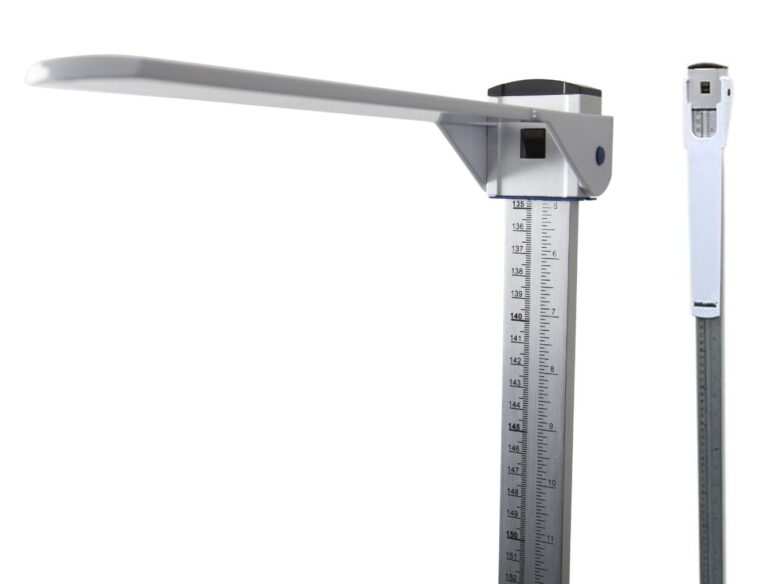Height Measurement Procedure
This height measurement procedure is more for height research studies to ensure accurate adult height assessments.
Head and foot placement, footwear, and posture can all have an impact on height measurement. Therefore, a method for measuring height that can be repeated by different measurers across time and in the same subject is required.
Repeatable
Accurate and repeatable height measurements are necessary for cross-sectional group investigations as well as longitudinal follow-up studies of individuals or populations.

Purpose:
To ensure proper and uniform measurement of adult height.
Scope:
This protocol is applicable to any research that needs to measure the height of an adult.
Responsibilities:
When measuring adult height, the measurer bears the responsibility to follow this protocol. The Principal Investigator bears the task of guaranteeing that personnel engaged in particular studies possess the necessary experience.
Procedure:
Stadiometers are tools made expressly to measure height accurately, and when used properly, they produce the best possible data. There are many different stadiometer models on the market. We find the Charder HM200P to be incredibly “user friendly,” most stadiometer types can produce findings that are just as accurate provided the measurer follows the instructions below.
Height Measurement Steps
Two practitioners should be present; one will hold the participant’s head in the proper position while the other will read the value.
Verify Stadiometer Accuracy
Ensure that a calibration rod with defined heights is used to verify the stadiometer.
Clean Equipment
Prior to use, make sure the stadiometer is thoroughly cleaned and sterilized.
Explain Procedure
Walk the individual through the process. Tell them you will be taking three measures of their height and that you would like them to stand as straight and tall as possible.

Prepare Participant
Make sure the participant takes off their shoes and any bulky outerwear. Take off hair items that get in the way of measurements and undo or change hairstyles.
Arms
Request that the participant stand on the stadiometer with their arms hanging loosely by their sides, facing forward as tall and straight as they can.
Feet
Their feet should be flat on the base plate of the stadiometer and positioned slightly apart, in line with their hips, to improve balance. The base plate has an outline of feet, however it is not required for the participant to stand on these markers. When possible their heels should be in contact with the heel plate.
Knees and Buttocks
Their knees should be straight and their buttocks and shoulders should contact the stadiometer.
Head – Frankfort Plane
Make sure that the person’s head is in the “Frankfort plane.” This position is an imaginary line drawn from the lower edge of the eye socket to the center of the ear hole.
Position Participant
One person may need to hold the participant’s head in their hands using the heels of their palms on either side of the face and their fingers resting on the back of the skull above the neck, . The mastoid process, which is located behind the ears, should be where their fingers land. Press up firmly but gently to raise the head as high as possible. Steer clear of jerky motions, careful not to tilt the head.
Confirm Position
To make sure the Frankfort Plane is accurate, the other measurer needs to step aside. Any knee bending, sagging of the shoulders, or lifting of the heels can be detected by either measurers.
Deep Breath
Request that the participant inhale deeply and hold it.
Headpiece
The headpiece should then be placed on the participant’s head by the assisting measurer who is standing to the side, making that it rests on the top back portion of the head, or the crown.
Read and Record Measurement
After that, the measurer should read the measurement. The measurer’s eyes must be level with the indicator or pointer, and the measurement must be read to the closest graduation (a stool or small ladder may be needed for this). Take note of the measurement.
Three Measurements
Ask the subject to step away from the stadiometer in between each of the three height measurements.
Consistency
The three measures ought to coincide by no more than 1/4 inch. You must take height measures until the three most recent results are within 1/4 inch of one another.
Average
After noting the three latest outcomes, add the three values together and divide the result by three to find the average.
Multiple Days
If you are measuring the same person more than once on various days, try to take the measurements at the same time of day. Height decreases during the day as a result of the spine’s compression.





